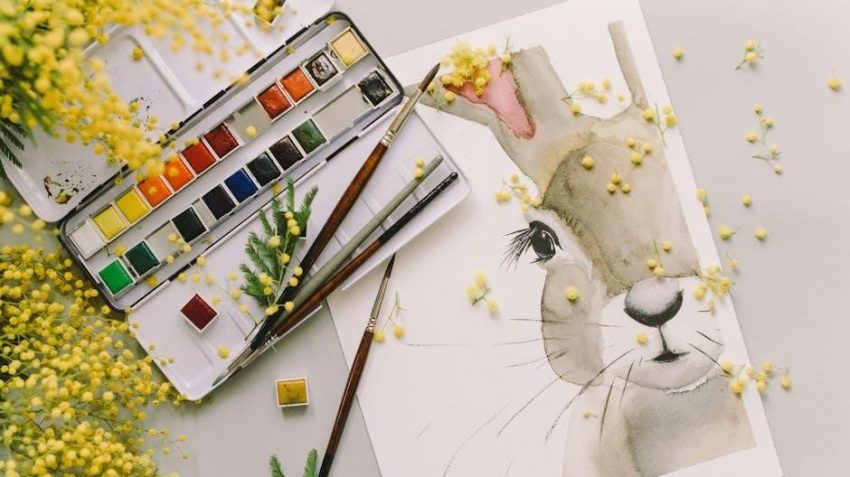A PDF portfolio is a professional, curated collection of artwork, telling a visual story with a clear beginning, middle, and end. Universally accessible, it maintains consistent formatting, making it ideal for artists, students, and professionals to showcase their skills and artistic journey effectively.
1.1 Overview of Digital Art Portfolios
Digital art portfolios are modern, organized collections of an artist’s work, showcasing their creativity and skills. Unlike traditional physical portfolios, digital versions are easily shareable and accessible online. They often include high-quality images, descriptions, and context for each piece. Digital portfolios are versatile, allowing artists to present their work professionally to galleries, schools, or potential clients. They can be tailored to specific opportunities, making them a crucial tool for career advancement. The digital format also offers flexibility in design and customization, ensuring the portfolio reflects the artist’s unique style and vision.
1.2 Importance of PDF Format for Art Portfolios
The PDF format is universally accepted and maintains consistent formatting across devices, ensuring your art is viewed as intended. It offers security, as files can be password protected to safeguard your work. PDFs are easily shareable via email or online platforms, making them convenient for submissions. Many galleries, schools, and clients specifically request PDF portfolios, highlighting its professional standard. This format allows artists to present their work in a polished, accessible manner, preserving their creative intent and making a lasting impression.
Structure of an Effective Art Portfolio
An effective art portfolio structure includes a clear introduction, curated main content showcasing best work, and a strong conclusion with contact information to leave a lasting impression.
The introduction to an art portfolio is crucial, as it sets the tone and provides context for the viewer. An artist statement, typically 1-2 pages, should concisely explain your artistic vision, inspiration, and goals. It should reflect your unique voice and style, giving insight into what drives your creativity. A summary or table of contents follows, outlining the structure of the portfolio. This section should be engaging yet professional, avoiding overly technical jargon. The introduction ensures that your work is understood in the context you intend, making it essential for creating a cohesive and impactful portfolio.
2.2 Main Content: Showcasing Best Work
The main content of your PDF portfolio should highlight your most compelling and representative pieces. This section is where you showcase your artistic range and technical proficiency. Include high-quality images of your best work, ensuring they are well-lit and professionally presented. Each piece should be accompanied by a brief description, such as the medium, inspiration, and creative process. Avoid overcrowding pages—instead, use a clean layout to let your art stand out. This section should demonstrate your ability to execute cohesive projects and capture the viewer’s attention with your unique artistic voice.
2.3 Conclusion: Lasting Impression and Contact Information
The conclusion of your PDF portfolio should leave a lasting impression, reinforcing your artistic vision and goals. Include a brief statement summarizing your aspirations or philosophy as an artist. Provide clear contact information, such as your email, website, and social media links, to make it easy for galleries, universities, or clients to reach you. Ensure your contact details are professional and neatly formatted. This final section ties your portfolio together, making it memorable and accessible for future opportunities. Keep the tone confident and forward-looking, encouraging viewers to connect and explore your work further.
Organization and Navigation
Effective organization and navigation are crucial for a professional art portfolio. Clear categories, intuitive layouts, and a table of contents ensure easy access to your work.
3.1 Labeling and Categorizing Projects
Clear labeling and categorization are essential for a cohesive art portfolio. Use descriptive titles for each project, including dates and mediums to provide context. Group similar works together, such as by theme, medium, or technique, to showcase versatility; Consider adding brief descriptions or artist statements for each piece to explain inspiration or creative processes. Use consistent formatting for labels and categories to maintain professionalism. This structure helps viewers easily navigate and understand your artistic journey. Tools like tables of contents or indexes can further enhance accessibility. Avoid clutter by ensuring each category is distinct and purposeful, reflecting your artistic vision clearly.

3.2 Clear Organization for Easy Navigation
A well-organized PDF portfolio ensures easy navigation, enhancing the viewer’s experience. Start with a clear table of contents or index, allowing quick access to different sections. Use page numbers or digital bookmarks for seamless browsing. Maintain consistent page layouts and spacing to avoid visual clutter. Ensure that each section flows logically, guiding the viewer from introduction to conclusion. Use clear headings and subheadings to differentiate sections. Consider adding a thumbnail gallery or overview page for quick access to key works. This structure not only enhances professionalism but also ensures your artwork is easily discoverable, making a lasting impression on reviewers.

Visual Identity and Layout
A strong visual identity and layout enhance your portfolio’s aesthetic appeal and professionalism. Consistent design elements, whitespace, and readable fonts ensure a polished, cohesive presentation.

4.1 Minimalist Design Principles
A minimalist design approach ensures your portfolio remains uncluttered and focused on your art. Clean layouts, simple fonts, and ample white space allow your work to shine without distractions. Consistent spacing and alignment create a professional look, while subtle color palettes enhance visual harmony. Avoid overly decorative elements that might detract from your artwork. Minimalist principles ensure readability and ease of navigation, making your portfolio both aesthetically pleasing and functional. This approach also ensures your art portfolio appears modern and sophisticated, which is often preferred by universities, galleries, and potential employers.
4.2 Use of Whitespace and Readable Fonts
Whitespace is crucial for maintaining a clean, professional look in your PDF portfolio. It prevents clutter and ensures your artwork stands out. Avoid overcrowding pages, as this can distract from your creative work. Use readable fonts that are clear and consistent throughout the document. Sans-serif fonts like Helvetica or Arial are ideal for their simplicity and legibility. Proper font sizing ensures text is easy to read without overwhelming the viewer. Balancing whitespace with readable fonts creates a harmonious design that enhances the viewer’s experience, making your portfolio both visually appealing and easy to navigate. This balance is key to presenting your art professionally.

Showcasing Versatility in Artwork
Demonstrate your artistic range by including diverse styles, techniques, and mediums. This highlights your adaptability and creativity, making your portfolio appealing to broader audiences and opportunities.
5.1 Including Diverse Media and Techniques
Incorporate a variety of artistic mediums and techniques to showcase your versatility. Digital art, watercolor, sculpture, and mixed media examples demonstrate your ability to explore different creative approaches. Highlighting both traditional and digital methods, such as painting, drawing, and graphic design, reveals your adaptability. Including sketches, final pieces, and experimental works provides insight into your creative process. This diversity not only reflects your technical skills but also your willingness to explore and innovate, making your portfolio more engaging and comprehensive for reviewers seeking well-rounded artists. Balancing consistency with experimentation ensures a dynamic and impressive presentation of your artistic range.
5.2 Highlighting Different Artistic Styles
Displaying a range of artistic styles in your portfolio demonstrates your creative versatility and adaptability. Include examples of realism, abstract, impressionism, and other genres to show your ability to explore different aesthetics. This diversity attracts reviewers seeking artists with a broad creative vision. Organize styles clearly, ensuring each piece reflects your mastery of various techniques. Highlighting different styles also reveals your willingness to experiment and grow, making your portfolio more engaging and memorable. This approach not only showcases technical skills but also your unique artistic voice and ability to adapt to different creative challenges.

Technical Specifications for PDF Portfolios
Ensure your PDF adheres to standard specifications: use 300 DPI for high-quality images, compress files for faster loading, and optimize for both desktop and mobile viewing.
6.1 File Size and Naming Conventions
Keep your PDF portfolio file size under 10MB to ensure quick downloads and compatibility. Use clear naming conventions, such as “John_Doe_Art_Portfolio_2023.pdf,” to maintain professionalism and organization. Avoid special characters or spaces, as they may cause issues during submission; Compress images without sacrificing quality to reduce file size. Ensure the file is compatible with both Mac and PC systems. Proper naming and sizing are essential for a polished, professional presentation, especially when submitting to universities or galleries. This attention to detail reflects your commitment to quality and organization.
6.2 Image Resolution and Compression
Optimize images in your PDF portfolio by using appropriate resolution and compression. Aim for 72-300 DPI for digital viewing, ensuring clarity without excessive file size; Use compression tools to reduce file size while maintaining quality, with formats like JPEG for photos and PNG for graphics. Avoid over-compression to prevent pixelation. Tools like Adobe Acrobat or online compressors can help balance quality and size. Proper optimization ensures your portfolio loads quickly while showcasing your art professionally. This step is crucial for maintaining visual integrity and user experience, especially for digital submissions to universities or galleries.
Submitting Your Portfolio
Submitting your portfolio requires understanding submission guidelines, tailoring content to specific opportunities, and ensuring timely delivery. Verify deadlines, formatting requirements, and organize your work clearly for each submission.
7.1 Adhering to University Requirements

When submitting your art portfolio to universities, it’s crucial to adhere strictly to their specific requirements. Most institutions provide detailed guidelines, including file formats, page limits, and content expectations. Ensure your PDF aligns with these specifications, as deviations may disqualify your submission. Review the university’s website or contact their admissions office for clarity. Organize your portfolio to highlight work that aligns with the program’s focus, and double-check technical details like resolution and file size. Following these guidelines demonstrates professionalism and attention to detail, increasing your chances of a successful submission.
7.2 Tips for Scholarship Submissions
When applying for scholarships, your art portfolio must stand out by demonstrating exceptional quality and alignment with the scholarship’s objectives. Tailor your portfolio to the specific scholarship criteria, emphasizing works that reflect the program’s focus. Highlight your artistic versatility and technical proficiency through a curated selection of pieces. Ensure high-resolution images and a professional layout to make a strong impression. Include a brief artist statement explaining your inspiration and goals. Finally, proofread all text and ensure the PDF is optimized for quick loading. A polished, well-organized portfolio significantly enhances your chances of securing a scholarship.

Real-Life Examples and Resources
Explore real-life examples from university art programs and online galleries. Websites like Behance and Saatchi Art offer inspiring portfolio templates and resources for artists.
8.1 University Art Program Portfolios
University art program portfolios are exceptional resources for artists seeking inspiration. These portfolios are often used in university admissions and grant applications, showcasing an artist’s best work. They are curated to highlight creativity and technical proficiency, aligning with the program’s requirements. Many universities offer sample portfolios on their official websites or through online platforms, providing valuable insights into what admissions committees expect. Examining these examples can help artists understand how to present their work effectively, ensuring their portfolios stand out in competitive programs.

8.2 Online Galleries and Artist Websites
Online galleries and artist websites are dynamic platforms for showcasing art portfolios. Websites like Behance, ArtStation, and Saatchi Art allow artists to present their work professionally, with high-resolution images and detailed descriptions. These platforms often feature curated collections and provide insights into contemporary artistic trends. Many artists use these sites to build their personal brands and connect with global audiences. Additionally, online galleries frequently include downloadable PDF portfolios, offering a convenient way for viewers to explore an artist’s work offline. These resources are invaluable for inspiration and understanding how to effectively present artistic endeavors digitally.
A well-crafted PDF portfolio is essential for showcasing artistic talent, balancing aesthetics and functionality. It serves as a professional gateway to opportunities, highlighting creativity and versatility effectively.
9.1 Final Thoughts on Creating a PDF Portfolio
Creating a PDF portfolio is a vital step in showcasing artistic skills professionally. It requires careful selection of artworks, ensuring quality over quantity. The portfolio should reflect the artist’s unique style and versatility while maintaining a cohesive narrative. Proper formatting, clear navigation, and visual appeal are essential for leaving a lasting impression. Tailoring the portfolio to the intended audience and adhering to submission guidelines can significantly enhance opportunities. Remember, a portfolio is not just a collection of works but a representation of the artist’s brand and creative journey. Invest time in refining it, as it serves as a gateway to new possibilities.
9.2 Encouragement to Start Building Your Portfolio
Starting your PDF portfolio is an exciting step toward showcasing your artistic talents. Remember, it’s a reflection of your creativity and dedication. Begin by gathering your best pieces and organizing them thoughtfully. Don’t wait for perfection—start now and refine as you grow. A portfolio is a dynamic tool that evolves with your skills. Embrace the process, and let it tell your unique story. The earlier you begin, the more opportunities you’ll have to share your work with the world. Take the first step confidently and watch your portfolio become a powerful gateway to new creative opportunities.

Additional Resources
Explore websites like Behance and ArtStation for inspiration. Utilize tools like Canva or Adobe InDesign to create polished PDFs. Join online art communities for feedback and growth.
10.1 Recommended Websites for Inspiration
Discover inspiring art portfolios on platforms like Behance, ArtStation, and DeviantArt. These sites showcase diverse artistic styles and mediums, offering a wealth of ideas for your PDF portfolio. Explore Behance for professional presentations, while ArtStation highlights digital art and design. DeviantArt provides a community-driven space to discover emerging talents. Additionally, visit Dribbble for design-focused portfolios and Pinterest for visual inspiration. Use these resources to gain insights into layout, organization, and creative approaches, ensuring your portfolio stands out. Regularly browsing these sites can help refine your artistic vision and presentation style.
10.2 Tools for Creating and Optimizing PDFs
Use tools like Adobe InDesign or Canva to design and layout your PDF portfolio. For optimization, Adobe Acrobat offers features to reduce file size and compress images. SmallPDF is another handy tool for compressing PDFs online. Additionally, scribus.net provides free, open-source software for designing professional PDFs. These tools help ensure your portfolio is visually appealing, well-organized, and compatible with submission guidelines. By utilizing these resources, you can create a polished, professional PDF portfolio that showcases your artistic skills effectively. Regularly updating and refining your portfolio using these tools is essential for long-term success.

